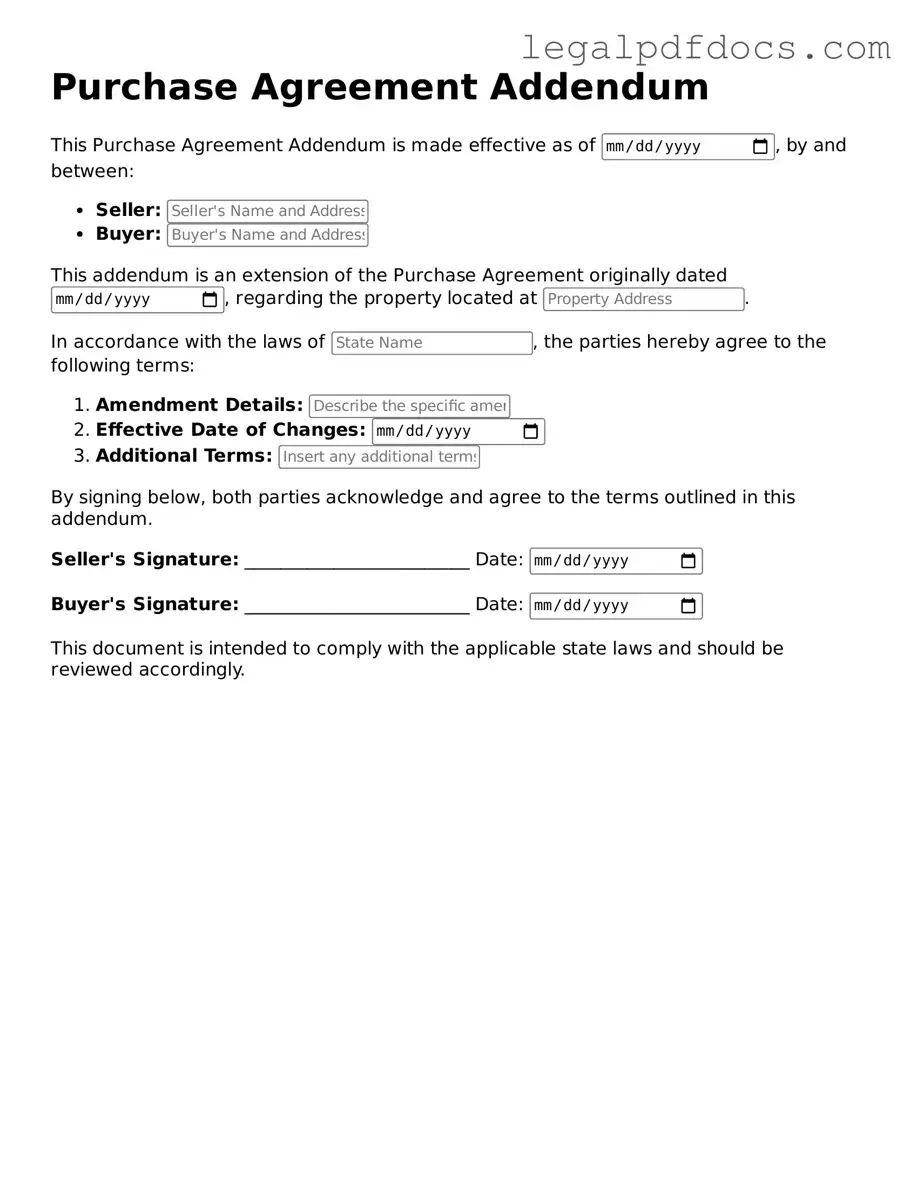The Purchase Agreement Addendum form serves as a vital tool in real estate transactions, providing clarity and specificity to the terms originally outlined in a purchase agreement. This addendum allows buyers and sellers to modify or add conditions to their agreement, ensuring that all parties are on the same page regarding important details. Common aspects addressed in this form include contingencies related to financing, inspections, and repairs, as well as adjustments to the purchase price or closing date. By incorporating these elements, the addendum can protect the interests of both buyers and sellers, fostering a smoother transaction process. It is essential for all parties involved to carefully review and understand the terms laid out in the addendum, as it can significantly impact the overall agreement and the successful transfer of property. Furthermore, this form can accommodate unique circumstances that may arise during negotiations, allowing for a more tailored approach to the sale. Understanding the nuances of the Purchase Agreement Addendum can empower individuals to navigate the complexities of real estate transactions with confidence.
